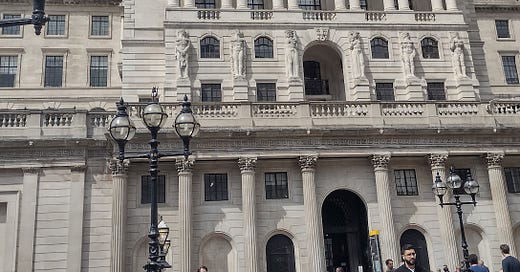A Nation of Shopkeepers
ANNETTE ON THE ROAD Money Makes the World Go Askew. The View from London
Napoleon (French military leader/strong man ruler, not the pastry) usually gets the credit for sneering at the Brits that they were “a nation of shopkeepers”.
Whoever said it may not have been Napole…



